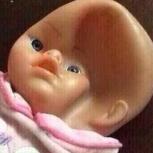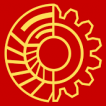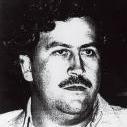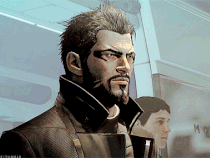Jump to content
Leaderboard
Popular Content
Showing most liked content on 10/18/2018 in Posts
-
2 points
-
1 pointCartel de Medellín Pablo Escobar Pablo Emilio Escobar Gaviria was born on 1 December 1949, in Rionegro, in the Antioquia Department of Colombia. Raised in the nearby city of Medellin, Escobar is thought to have begun his criminal career as a teenager, allegedly stealing gravestones and sanding them down for resale to local smugglers. His brother, Roberto Escobar, denies this, instead claiming that the gravestones came from cemetery owners whose clients had stopped paying for site care, and that he had a relative who had a monuments business. Escobar studied at the University for a short period, but left without obtaining a degree. Escobar eventually became involved in many criminal activities with Oscar Benel Aguirre, with the duo running petty street scams, selling contraband cigarettes, fake lottery tickets, and stealing cars. In the early 1970s, prior to entering the drug trade, Escobar acted as a thief and bodyguard, allegedly earning US $100,000 by kidnapping and holding a Medellin executive for ransom. Escobar began working for Alvaro Prieto, a contraband smuggler who operated around Medellin, aiming to fulfill a childhood ambition to have COL $1 million by the time he was 22. Escobar is noted for his bank deposit of COL $100 million (more than US $3 million), when he turned 26. Criminal career Cocaine distribution Beginning in 1975, Pablo started developing his cocaine operation, flying out planes several times, mainly between Colombia and Panama, along smuggling routes into the United States. When he later bought fifteen bigger airplanes, including a Learjet and six helicopters, according to his son, a dear friend of Pablo's died during the landing of an airplane, and the plane was destroyed. Pablo reconstructed the airplane from the scrap parts that were left and later hung it above the gate to his ranch at Hacienda Napoles. In May 1976, Escobar and several of his men were arrested and found in possession of 39 pounds (18 kg) of white paste, attempting to return to Medellin with a heavy load from Ecuador. Initially, Pablo tried to bribe the Medellin judges who were forming a case against him, and was unsuccessful. After many months of legal wrangling, he ordered the murder of the two arresting officers, and the case was later dropped. Roberto Escobar details this as the point where Pablo began his pattern of dealing with the authorities, by either bribery or murder. Roberto Escobar maintains Pablo fell into the drug business simply because other types of contraband became too dangerous to traffic. As there were no drug cartels then, and only a few drug barons, Pablo saw it as untapped territory he wished to make his own. In Peru, Pablo would buy the cocaine paste, which would then be refined in a laboratory in a two-story house in Medellin. On his first trip, Pablo bought a paltry 30 pounds (14 kg) of paste in what was noted as the first step towards building his empire. At first, he smuggled the cocaine in old plane tires, and a pilot could return as much as US $500,000 per flight, dependent on the quantity smuggled. RISE TO PROMINENCE Soon, the demand for cocaine was skyrocketing in the United States, and Escobar organized more smuggling shipments, routes, and distribution networks in South Florida, California, and other parts of the country. He and cartel co-founder Carlos Lehder worked together to develop a new trans-shipment point in the Bahamas, an island called Norman's Cay about 220 miles (350 km) southeast of the Florida coast. According to his brother, Escobar did not purchase Norman's Cay; it was, instead, a sole venture of Lehder's. Escobar and Robert Vesco purchased most of the land on the island, which included a 1 kilometre (3,300 ft) airstrip, a harbor, a hotel, houses, boats, and aircraft, and they built a refrigerated warehouse to store the cocaine. From 1978 to 1982, this was used as a central smuggling route for the Medellin Cartel. With the enormous profits generated by this route, Escobar was soon able to purchase 7.7 square miles (20 km2) of land in Antioquia for several million dollars, on which he built the Hacienda Napoles. The luxury house he created contained a zoo, a lake, a sculpture garden, a private bullring, and other diversions for his family and the cartel. At one point it was estimated that 70 to 80 tons of cocaine were being shipped from Colombia to the United States every month. In the mid-1980s, at the height of its power, the Medellín Cartel was shipping as much as 11 tons per flight in jetliners to the United States. escobar at the height of his power During the height of its operations, the Medellin Cartel brought in more than US $70 million per day (roughly $26 billion in a year). Smuggling 15 tons of cocaine per day, worth more than half a billion dollars, into the United States, the cartel spent over US $1000 per week purchasing rubber bands to wrap the stacks of cash, storing most of it in their warehouses. Ten percent (10%) of the cash had to be written off per year because of "spoilage", due to rats creeping in and nibbling on the bills they could reach. When questioned about the essence of the cocaine business, Escobar replied with "[the business is] simple: you bribe someone here, you bribe someone there, and you pay a friendly banker to help you bring the money back."In 1989, Forbes magazine estimated Escobar to be one of 227 billionaires in the world with a personal net worth of close to US $3 billion[while his Medellin Cartel controlled 80% of the global cocaine market. It is commonly believed that Escobar was the principal financier behind Medellin's Atletico Nacional, which won South America's most prestigious football tournament, the Copa Libertadores, in 1989. While seen as an enemy of the United States and Colombian governments, Escobar was a hero to many in Medellin (especially the poor people). He was a natural at public relations, and he worked to create goodwill among the poor of Colombia. A lifelong sports fan, he was credited with building football fields and multi-sports courts, as well as sponsoring children's football teams.Escobar was also responsible for the construction of houses and football fields in western Colombia, which gained him popularity among the poor. He worked hard to cultivate his Robin Hood image, and frequently distributed money through housing projects and other civic activities, which gained him notable popularity among the locals of the towns that he frequented. Some people from Medellin often helped Escobar avoid police capture by serving as lookouts, hiding information from authorities, or doing whatever else they could to protect him. At the height of his power, drug traffickers from Medellin and other areas were handing over between 20% and 35% of their Colombian cocaine-related profits to Escobar, as he was the one who shipped cocaine successfully to the United States. The Colombian cartels' continuing struggles to maintain supremacy resulted in Colombia quickly becoming the world's murder capital with 25,100 violent deaths in 1991 and 27,100 in 1992.This increased murder rate was fueled by Escobar's giving money to his hitmen as a reward for killing police officers, over 600 of whom died as a result. Personal life After becoming wealthy, Escobar created or bought numerous residences and safe houses, with the Hacienda Napoles gaining significant notoriety. The luxury house contained a colonial house, a sculpture park, and a complete zoo with animals from various continents, including elephants, exotic birds, giraffes, and hippopotamuses. Escobar had also planned to construct a Greek-style citadel near it, and though construction of the citadel was started, it was never finished. Escobar also owned a home in the US under his own name: a 6500 square foot, pink, waterfront mansion situated at 5860 North Bay Road in Miami Beach, Florida. The four-bedroom estate, built in 1948 on Biscayne Bay, was seized by the government in the 1980s. Later, the dilapidated property was owned by Christian de Berdouare, proprietor of the Chicken Kitchen fast-food chain, who had bought it in 2014. De Berdouare would later hire a documentary film crew and professional treasure hunters to search the edifice before and after demolition, for anything related to Escobar or his cartel. They would find unusual holes in floors and walls, as well as a safe that was stolen from its hole in the marble flooring before it could be properly examined. Escobar also owned a massive Caribbean getaway on Isla Grande, the largest of the cluster of the 27 coral cluster islands comprising Islas del Rosario, located about 22 miles (35 km) from Cartagena. The compound, now half-demolished and overtaken by vegetation and wild animals, featured a mansion, apartments, courtyards, a large swimming pool, a helicopter landing pad, reinforced windows, tiled floors, and a large, unfinished building to the side of the mansion.
-
1 pointI mean there been so many Life mods on the AAA Games from DayZ to GTA V. How is it different from those mods? I've been wanting to play those mods but I need to sign up and all that and apply for those types of RP. And I used to have an I5 back in the day and my connection weren't so great and I don't do streaming on those games back in the day but did record alot of gameplays of games that I play. Will there be perma deaths in Identity cause usually people getting shot at and get treated at the hospital and saying your good like all other life mods. Very Hype on this game. I like the zombie survivial life mod but this Real Life I kinda dig. I like to meet new people down the lines.
-
1 pointQuestion. Do you have to be a lizard to apply? Or will you accept humans too now? You guys must be getting desperate if you're gonna start accepting humans.
-
1 pointI too like it. Not only does it give more players something to do, more critically it increases player representation in government. Checks and balances.
-
1 pointRight now the last I heard they have it in their head that Governor terms will last 4 days.. That's completely dysfunction for organizing and accomplishing anything of merit, so until I see a proper governmental system design presented, I will have to withhold my actual professional expertise in this area.
-
1 pointI don`t align to no one..... I`d rather just watch the world burn in all it`s political correctness glory!
-
1 pointI find it interesting because if this sim is worth it's salt we might see how some real world political ideas play out in a microcosm. I too have a strong Classical Liberal affiliation. I'd like to see a functional minarchy in whatever server I'm in.
-
1 pointApplication: Full Name: Ka ayapahk Mahihkan Current Occupation:N/A Former Occupation(s):N/A Residence/Address: N/A Reason for joining: I am a Communist and want to overthrow the bourgeoisie





_600.1635118.thumb.jpg.805137d6b873308fddc59c1f676820bb.jpg)


